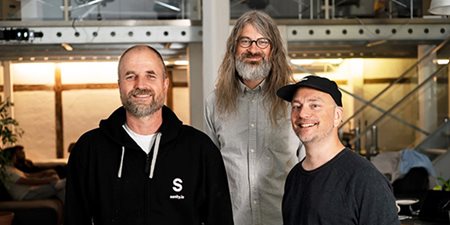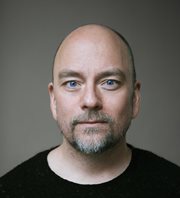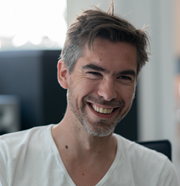Norwegian CMS startup Sanity - The New Kid in Town
Content is king and it plays a major role in the journey of building your online presence and brand. Without it, you're going to struggle in today’s ruthless business world. In fact, digital marketing is arguably one of the most important areas of commerce, although it’s often neglected. Recently after I came across this story in the Nordic Business Insider titled “These Norwegian entrepreneurs are out to kill ‘monolithic’ content management systems” I was intrigued, and wanted to find out more about the company Sanity.
Founded in 2017 by Øyvind Rostad, Simen Svale Skogsrud, Magnus Hillestad and Even Westvang. Sanity, a recent start up, is an extension from the Norwegian digital agency Bengler and this new kid in town is wanting to stir things up in the CMS community.
The headless CMS game isn’t new but it’s still evolving and there is a lot of room for growth and development. Generally when your content has been distributed it’s often difficult to make meaningful changes, a fully customizable headless CMS allows companies to store content in one system so that they can publish on different surfaces - from websites to books and apps. Sanity CMS lets you re-purpose content that’s landlocked inside marketing and PR and delivers your content across APIs directly to where you need it in your organization.
I was able to get in contact with Even Eidsten Westvang, the CPO of Sanity along with CEO Magnus Hillestad to give me some insight into their company and product.
I understand the company started out as a digital agency, when did you decide to fully immerse yourselves into becoming a content management platform?
 Even responded, "Our company had quite a split personality. We spent our time in part building critical infrastructure for media companies and in part as creative technologists. In building services for Amedia, a group of 60 Norwegian local newspapers, we created a micro-service architecture for handling content. Having discrete backend systems for user handling, text and images was a huge advantage and let us quickly power up new services for things like listings and commenting.
Even responded, "Our company had quite a split personality. We spent our time in part building critical infrastructure for media companies and in part as creative technologists. In building services for Amedia, a group of 60 Norwegian local newspapers, we created a micro-service architecture for handling content. Having discrete backend systems for user handling, text and images was a huge advantage and let us quickly power up new services for things like listings and commenting.
It didn’t take long before they asked us to add a facility for editing content as well. The architecture we had in place led us to consider content as structured data; structured content if you will. Structured content that you can retarget to any channel and that you can interoperate with other systems. A CMS for the connected age.
We created the minimal viable product of Sanity when working for the Dutch architectural office OMA. Founded by Rem Koolhaas in 1975 they needed an archive for their hundreds of projects and thousands of people who had been involved in them. We used this as an opportunity to refine our ideas. The backend doesn’t know anything about the visual presentation, yet the website is a vibrant assemblage of their work. After the site was launched they asked us to revisit the project and produce print-on-demand books, something that could easily be done without content rework.
This confirmed to us that structured content could change the way people reason about how they build digital products. We spent an additional two years completing Sanity while trialing it with our customers before publicly launching in November 2017."
With so many content management platforms out there why did you see the need to create your own? What makes your software stand out above the rest?
Even responded "Sanity.io is a real-time cloud-hosted data store especially suited for handling structured content. The editing environment is a fully open-source JavaScript toolkit that developers can use to shape the experience for editors. This gives you the advantages of a turnkey cloud-hosted backend with the flexibility of custom user interfaces.
Many of our competitors arose in the 90s. They’re targeted at web publishing and don’t play well with other systems. You’re simply out of luck if you want to retarget your content to mobile apps or integrate your editing workflows with other infrastructure. We believe this hampers the ability of companies to iterate on product and target new markets, lowering their agility.
These systems have also become behemoths that attempt to solve everything for their customers. A/B-testing, customer experience management, etc. This leads to complex systems that generally do some of what you want, but not everything and crucially, not in the way you actually needed.
We think that by structuring your content as data and making it easily available over secure and available APIs you can consider your CMS a part of your IT infrastructure. You can choose your integrations freely, assembling a stack from different SaaS vendors to get exactly the functionality you need.
This lets you reconsider your CMS in your general ECM strategy – content isn’t just undifferentiated matter generated at the leaf nodes of an organization in PR and marketing, but rather a first order data asset that interoperates with other services.
For this reason we also made sure to build Sanity as a real-time infrastructure. Not only is this necessary for collaborative editing, but it’s also a must for continuously synchronizing with other systems that update in real-time.
It’s really easy for developers to get up and running with Sanity in hours. They can build presentation logic and customize the editing environment with efficient, modern tooling that they actually like. This also saves a lot of time, effort and frustration."
Your company is still fairly new, where do you see your company’s growth/focus in the next 3-5 years?
 Magnus responded "True that we launched our product late last year, but our product has actually been in production since 2015, so it has been through a lot of development and testing. As for growth the coming years we will continue to be a vertical-agnostic developer tool. Although we have built a software that has features making it usable for enterprises, we believe that it’s key to build scale and be relevant for smaller teams and SME customers.
Magnus responded "True that we launched our product late last year, but our product has actually been in production since 2015, so it has been through a lot of development and testing. As for growth the coming years we will continue to be a vertical-agnostic developer tool. Although we have built a software that has features making it usable for enterprises, we believe that it’s key to build scale and be relevant for smaller teams and SME customers.
This will guide our growth strategy for the years to come. Also, given the fact that our editing environment is an open-source application we are very focused on building a community around the solution. Finally the US is the biggest and most important market for a product like ours and we are planning on expanding to the US already next year by moving 2 of 4 co-founders to the Bay Area."
Ending Notes
With the ever evolving content world you need your content to be more flexible. Sanity has created a system where content teams can easily work with content in a form that software can transform and distribute to all sorts of surfaces. Not only those that exist now, but also those who should appear in the future.
"We have finally built the dream solution for demanding content needs. A real-time collaboration tool for production, and a way to format the content of apps, web, paper, speech assistants or wherever you need it", says Skogsrud.
There are some many CMS platform options available it is so hard to really compare them without actually using the product yourself. So I encourage you, when you are seeking out a CMS to take the time in your research and make sure that you try the product first in order to make sure it suits your needs.

Natalie Evans
Natalie Evans has over 16-years in the tech industry and currently works as the event coordinator and tech reporter for CMS-Connected, keeping up-to-date on what's happening in and around the Content Management industry.